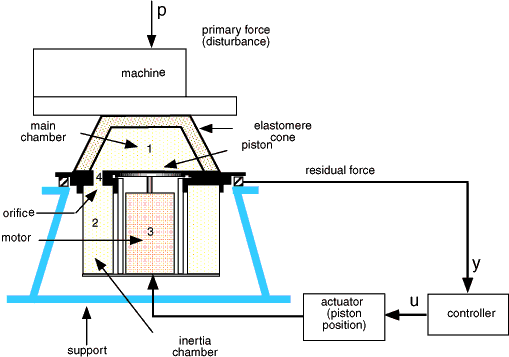SYSTEM DESCRIPTION

An active suspension system is used for disturbance attenuation in a large frequency band and in the presence of the load variation. The figure above shows the scheme of the active hydro-suspension system that reduces the machine vibration at the resonance frequency. The principal parts of the suspension system are:
1. an elastomere cone that encloses the main chamber filled with silicon oil,
2. an inertia chamber enclosed with a flexible membrane;
3. a piston that is fixed on a DC motor (when the position of the piston is fixed, the suspension system is passive);
4. an orifice that allows oil flow between two chambers.
The principal idea of the active suspension is to change the elasticity of the system in order to absorb the vibrations generated by the machine that we want to isolate. For the experimental purposes the machine is replaced by a shaker which is driven by a computer generated control signal.
The output of the system is the measured voltage corresponding to the residual force. The control input drives the position of the piston via an actuator. The transfer function between the excitation of the shaker and the residual force is called the primary path. The secondary path is defined as the transfer function between the control input and the residual force.
Above mentioned transfer functions are available in the following forms:
– continuous-time model
– discrete-time model